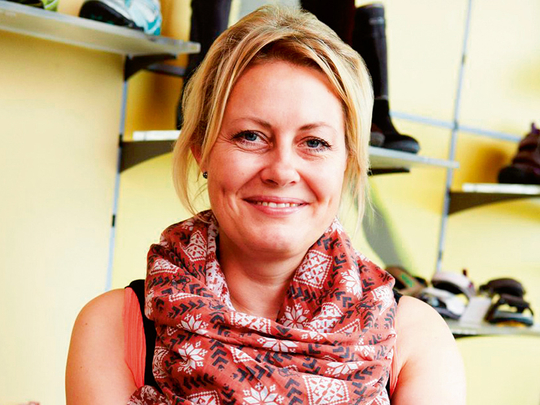
Dubai: If you have been pretty casual about shoe-shopping for kids, think again. A child’s foot is still developing. A wrongly chosen shoe could lead to foot-related problems in the future. Consider these tips:
Children’s shoe sizes should be checked several times every year, especially with smaller children as the nerve endings in their feet are not fully developed. It is difficult for them to tell whether their shoes are too tight or not. The rule of thumb, or toe rather, is that there should be a total of 1.5cm gap from the tip of the toe to the end of the shoe; that allows room enough for walking, growth and toe-box.
Seek shoes that are breathable as active feet are prone to perspiration. Canvas and leather shoes allow feet to breathe and keep foot odour at bay. Light, soft and flexible materials maximise mobility of feet.
Always go in for low heels and flats as they distribute the weight evenly. Higher heels only put a lot of load on the front of feet and younger children do not typically need arch support.
Have your children’s feet measured when buying shoes, since what might seem comfortable to them for a trial at the store is very different from what will be comfortable after a day of playing. Feet should be measured while standing, and always have both feet measured. Since one foot is usually larger than the other, buy shoes to accommodate the largest of the two feet.
Most parents fall for buying bigger sizes as children outgrow their footwear, really fast. But never buy footwear more than a size larger as wearing too big sizes for their feet may cause accidents and foot problems when trying to walk or run in them. As a general rule, it is always good to choose footwear with a fastening system like Velcro, laces and back strip. Soles should be thick and sturdy enough to protect the feet from pain and injury.
Choose different shoes for different purposes as what may seem right for daily use may not be an appropriate one for sports. Athletic activities need specially designed shoes with added cushioning and flexible soles to avoid stress on growing feet. Ensure that when trying out the footwear, your child wears socks that they will use with the pair. Socks tend to make the shoes feel snugger therefore it is better to get a size that will accommodate them. Right size in footwear will save your children from painful blisters and calluses.
-The author is kids’ senior designer at ECCO











